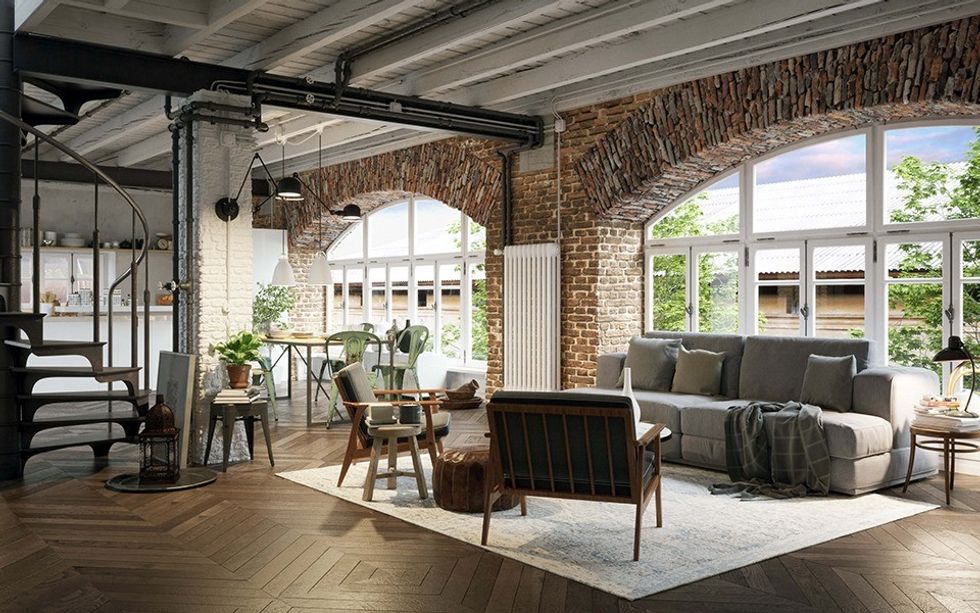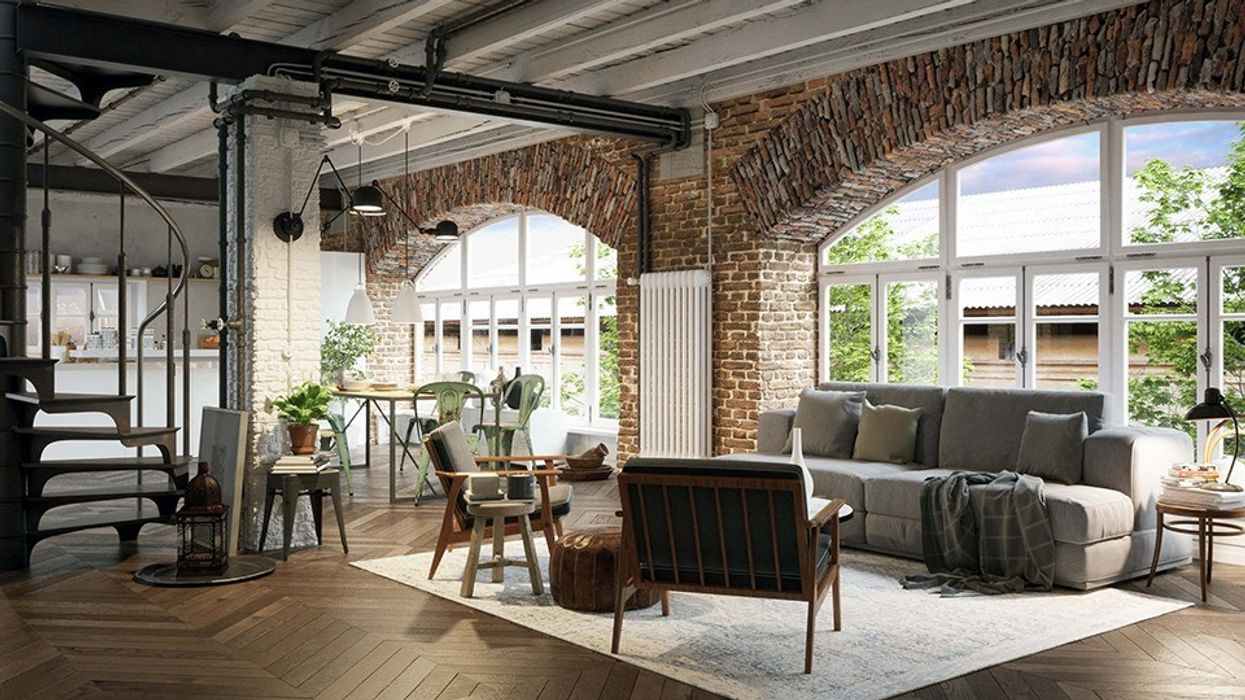
For those in search of a condo building that doesn’t fall under the Toronto stereotype of a modern, glass-and-steel highrise, there are tons of options out there in the market.
From intimate boutiques and contemporary midrises (think The Berczy and Pier 27) to historical residences (One King West), tracking down a space that pushes the design envelope may require a bit of perseverance, but it’s far from impossible.
When it comes to singling out the ultimate “anti-cookie-cutter” condo, loft apartments are arguably king.
Between their tall ceiling heights, flowing open-concept floor plans, lack of interior walls and unique industrial finishes, it’s easy to see the appeal of the loft lifestyle.
But buyers should note, not all Toronto lofts are created equal and if you’re in search of an authentic industrial loft, there’s a checklist of facts you’ll need to be acquainted with first.
1. Not all lofts are “genuine” or “industrial”
It’s not uncommon for buyers who are on the hunt for an authentic industrial loft to quickly have their search bogged down by apartments that are called lofts but look a whole lot like conventional condos.
So what’s the deal?
Among the first thing serious loft buyers should know is there are two types of lofts. Hard lofts and soft lofts.
Hard lofts are buildings that at one point functioned as manufacturing or industrial warehouses and later refurbished into private residences by a real estate developer. Hard lofts are usually what come to mind when you picture an industrial loft — historical decade-old buildings with exposed brick walls, massive factory-style windows and high ceilings.
On the other hand, soft lofts refer to new or recently built condos that seek to recreate (or for all intents and purposes, mimic) the loft style. While these buildings boast taller ceilings than the norm and at times feature exposed piping and vents, these lofts don’t match the authentic industrial history of a full-fledged hard loft.
It’s worth noting, not all soft lofts are created equal and there are several stunning options in Toronto that are worthy of a serious hard loft buyer’s attention (Seventy75 Portland for one). It takes a bit of extra effort and a good realtor by your side to separate the great soft lofts from those which use the word loft as more of a buzzword. Moreover, many landmark loft buildings in Toronto, such as Tip Top Tailor Lofts, actually feature a mix of both hard and soft loft units.
As a prospective loft buyer, you’ll quickly need to determine how much importance you place on buying a hard loft. In general, hard lofts are considerably pricier and in more limited supply when compared to soft lofts.
2. You’re going to have to limit your choice of neighbourhoods
Unlike conventional condo apartments, industrial loft conversions in Toronto aren’t as ubiquitous. Remember, these buildings once stood as manufacturing spaces and the developers who refurbished them had no power in picking out their locations.
So if buying a hard loft is your goal, you’re going to have to limit your search to a select number of neighbourhoods that, at some point in their past, were home to several industrial warehouses. In Toronto, that largely includes pockets of neighbourhoods in the downtown core as well as the city's east and west ends. Unfortunately, most hard lofts don’t feature ultra-convenient addresses that sit right along the subway line, so you’ll likely have to settle for a streetcar or bus instead of a train when commuting.
The MLS neighbourhoods of Niagara (which includes the areas of Liberty Village, Queen West), Riverdale and Moss Park are hard loft hotspots. On the other hand, high-rise hubs like North York, midtown Toronto and Mississauga have few, if any, true hard lofts in their bounds.
3. Open-concept can have its drawbacks (including a lack of storage)
One of the many reasons why lofts are so popular is their lack of interior walls. Without having to conform to a strict floor plan that breaks up rooms into separate living, dining and bedroom areas, you have the freedom to decorate and shape the space as you please.
However, there are certain drawbacks to having no interior walls. For one, you’ll have less privacy, as your bedroom will be on display to all visitors (although you can try to hide some of your room behind a sizeable bookshelf). Moreover, furniture shopping can be more difficult for the simple fact you’ll need to dedicate more time factoring placements of sofas and shelves. The blank canvas of a loft can be daunting.
Storage can also be a big issue, as certain hard loft projects won’t even come with private closets in the bedrooms, let alone shelves or storage units.
4. Condo fees are still a thing (heating can be expensive too)
Hard lofts may not be conventional condos, but in most cases, they still fall under the condo property type. And that means condo fees are still part of the equation.
Famous Toronto hard loft residences like Broadview Lofts and Candy Factory Lofts feature monthly maintenance fees, so you’ll have to factor that into your budget.
Other than condo fees, it’s not uncommon for your monthly heating and electricity bills to come out higher in a hard loft versus a traditional condo apartment due to the tall ceiling heights and massive factory-style windows.
5. You might have to compromise on views
Most hard lofts stand below 15 storeys, so if scenic views of the Toronto skyline or downtown waterfront is on your list of must-haves, you may want to consider other options.
6. Lofts can be pricey
Genuine loft conversions are a hot commodity in Toronto and they’re in short supply. Consequently, lofts are considerably more expensive than run-of-the mill condos and it’s not uncommon for bidding wars and bully offers to be part of the equation when trying to close a deal on a loft.





















